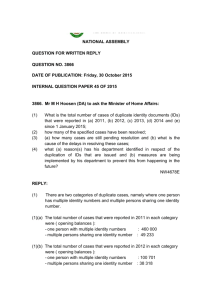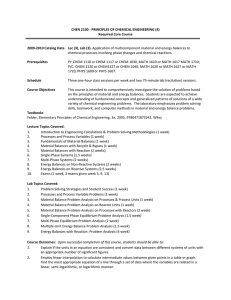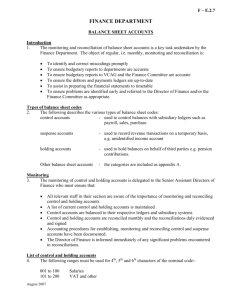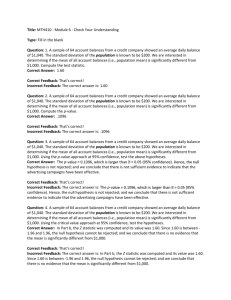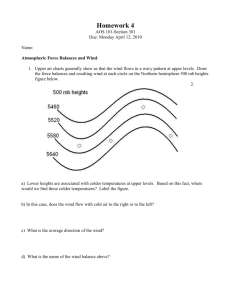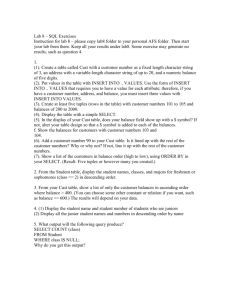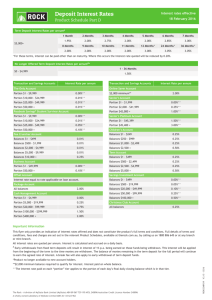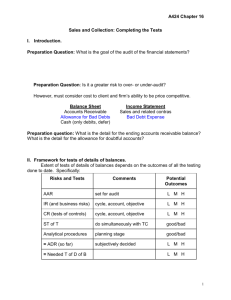ChBE 2100 Chemical Process Principles (required course) Credit
advertisement
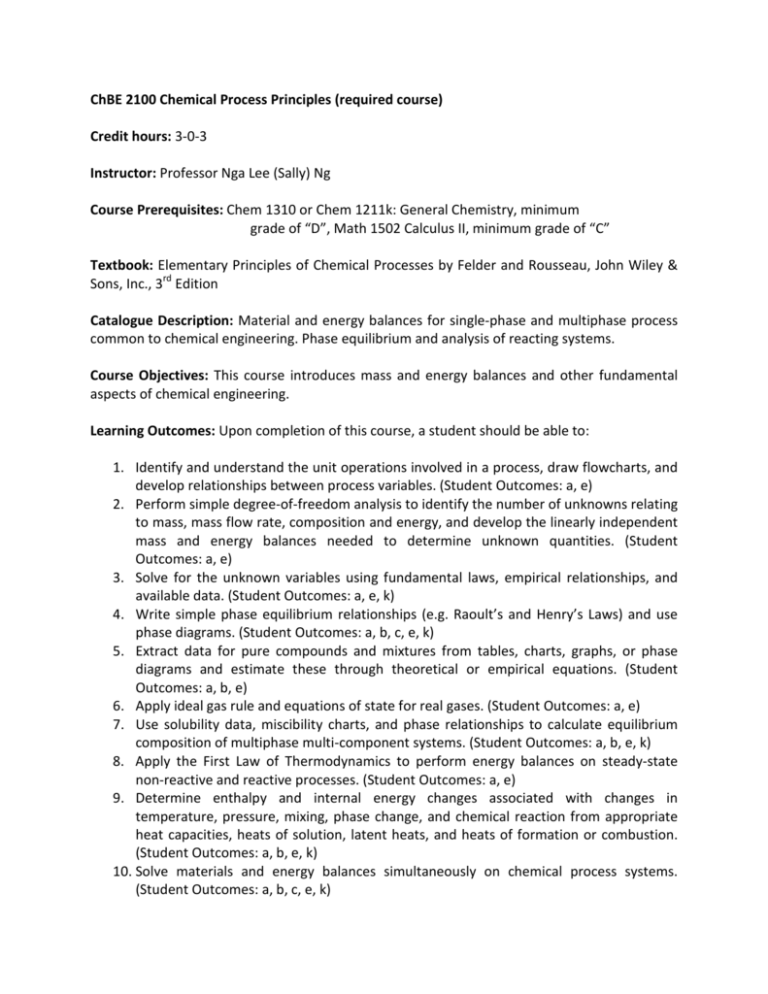
ChBE 2100 Chemical Process Principles (required course) Credit hours: 3-0-3 Instructor: Professor Nga Lee (Sally) Ng Course Prerequisites: Chem 1310 or Chem 1211k: General Chemistry, minimum grade of “D”, Math 1502 Calculus II, minimum grade of “C” Textbook: Elementary Principles of Chemical Processes by Felder and Rousseau, John Wiley & Sons, Inc., 3rd Edition Catalogue Description: Material and energy balances for single-phase and multiphase process common to chemical engineering. Phase equilibrium and analysis of reacting systems. Course Objectives: This course introduces mass and energy balances and other fundamental aspects of chemical engineering. Learning Outcomes: Upon completion of this course, a student should be able to: 1. Identify and understand the unit operations involved in a process, draw flowcharts, and develop relationships between process variables. (Student Outcomes: a, e) 2. Perform simple degree-of-freedom analysis to identify the number of unknowns relating to mass, mass flow rate, composition and energy, and develop the linearly independent mass and energy balances needed to determine unknown quantities. (Student Outcomes: a, e) 3. Solve for the unknown variables using fundamental laws, empirical relationships, and available data. (Student Outcomes: a, e, k) 4. Write simple phase equilibrium relationships (e.g. Raoult’s and Henry’s Laws) and use phase diagrams. (Student Outcomes: a, b, c, e, k) 5. Extract data for pure compounds and mixtures from tables, charts, graphs, or phase diagrams and estimate these through theoretical or empirical equations. (Student Outcomes: a, b, e) 6. Apply ideal gas rule and equations of state for real gases. (Student Outcomes: a, e) 7. Use solubility data, miscibility charts, and phase relationships to calculate equilibrium composition of multiphase multi-component systems. (Student Outcomes: a, b, e, k) 8. Apply the First Law of Thermodynamics to perform energy balances on steady-state non-reactive and reactive processes. (Student Outcomes: a, e) 9. Determine enthalpy and internal energy changes associated with changes in temperature, pressure, mixing, phase change, and chemical reaction from appropriate heat capacities, heats of solution, latent heats, and heats of formation or combustion. (Student Outcomes: a, b, e, k) 10. Solve materials and energy balances simultaneously on chemical process systems. (Student Outcomes: a, b, c, e, k) 11. Extract thermodynamic information from Steam Tables. (Student Outcomes: b, e) 12. Illustrate application of mass and energy balances to biological systems. (Student Outcomes: a, c, e, k) Topical Outline: 1. Introduction to Engineering Calculations a. Units and dimensions b. Numerical calculations and estimations c. Process data representation 2. Process and Process Variables 3. Fundamentals of Material Balances a. Process classification b. General balance equation c. Reactive processes 4. Single Phase System a. Ideal gases b. Equation of state for non-ideal gases 5. Multiphase Systems a. Phase equilibrium b. Gas-liquid systems c. Solid-liquid systems d. Liquid-liquid systems 6. Energy Balances a. Closed and open systems b. Energy balance equations c. Tables of thermodynamic data 7. Energy Balance on Nonreactive Processes a. Change in pressure and temperature b. Phase change 8. Energy Balance on Reactive Processes a. Heats of mixing and solution b. Heats of reaction c. Heats of formation 9. Transient Material and Energy Balances Prepared By: Nga (Sally) Lee Ng Date Modified: February 2014
